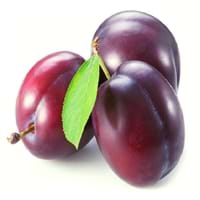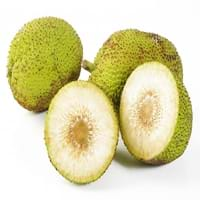Health Benefits
Cancer prevention, Cures gastro-intestinal troubles, Heart care, Increase in haemoglobin, Prevents diabetes
Cancer prevention, Heart care, Maintains healthy cholesterol level, Treatment of skin Diseases
General Benefits
Anti-inflammatory properties, Boosts immune system, Digestive aid, Eye care, Flu treatment, Helps in weight loss, Maintains healthy cholesterol level, Treatment of common cold
Boosts immune system, Digestive aid, Helps in weight loss, Maintains healthy cholesterol level
Skin Benefits
Anti-aging benefits, Brightens and lightens complexion, Reduces wrinkles, Skin revitalization, Treatment of dark spots
Anti-aging benefits, Skin rejuvenation, Treatment of skin diseases
Hair Benefits
Prevents hair loss, Promotes longer and healthier hair, Protects hair, Remedy for split ends, Treatment of dandruff
Protects hair, Regulates hair growth, Treatment of dandruff
Allergy Symptoms
Abdominal pains, Anaphylaxis, Vomiting
Hives, Inflammation of nose, Swelling of mouth, tongue or lips
Side Effects
Allergic reaction
Allergic reaction
Best Time to Eat
As a snack in the late afternoon, Eat the fresh ones, avoid mixing with any other foods, don't eat after meal., Morning time (before lunch)
Along with meal, As a snack in the late afternoon, Don't consume at night and before bed, Don't eat after meal
Vitamin B5 (Pantothenic Acid)
Vitamin C (Ascorbic Acid)
Vitamin K (Phyllochinone)
Phytosterol
Not Available
Calories in Fresh Fruit with Peel
Not Available
Calories in Fresh Fruit without Peel
Not Available
Calories in Frozen Form
Not Available
Calories in Dried Form
Not Available
Calories in Canned Form
Not Available
Calories in Jam
Not Available
Type
Tree fruit
Fruit vegetable, Tropical
Season
Summer
All seasons
Varieties
Victoria, President, Czar, Ariel, Avalon and Oullins Gage
Koqo, Tamaikora, Temaipo, Uto Kuro, Samoa, Buco Ni Viti and Kulu Dina
Color
Pink, Purple, Red
White, Yellow
Inside Color
Yellow
White
Taste
Juicy, Sweet, Tart
Bland
Origin
Caucasus
South Pacific
Soil Type
Clay, Loam, Sandy loam
Loam, Sand, Sandy loam, Well-drained
Climatic Conditions
Cold
Humid, Rainfall, Warm
Facts about
- In china, plums are used for production of wine.
- A chemical called amygdalin found in plum seeds, turns into toxic compound in human body.
- Plum tree produces fruit 3-5 yrs after planting.
- The milky sap of breadfruit tree is used as glue & bark is used to make papers.
- Breadfruit tree produces 1st fruit after 2-3 years from planting & remains productive for decades.
- The seeds of breadfruit are edible.
Top Producer
China
Jamaica
Other Countries
Bosnia, Chile, India, Iran, Italy, Romania, Serbia, Turkey, United States of America
Africa, India, United States of America
Top Importer
United Kingdom
United States of America
Top Exporter
Chile
Jamaica
Botanical Name
Prunus domestica
Artocarpus altilis
Synonym
Not Available
Artocarpus communis or Artocarpus incisa
Subkingdom
Tracheobionta
Tracheobionta
Division
Magnoliophyta
Magnoliophyta
Class
Magnoliopsida
Magnoliopsida
Subclass
Rosidae
Magnollidae
Species
P. domestica
A. altilis
Generic Group
Rose
Mulberry
Difference Between Plum and Breadfruit
We might think that Plum and Breadfruit are similar with respect to nutritional value and health benefits. But the nutrient content of both fruits is different. Plum and Breadfruit Facts such as their taste, shape, color, and size are also distinct. The difference between Plum and Breadfruit is explained here.
The amount of calories in 100 gm of fresh Plum and Breadfruit with peel is 46.00 kcal and Not Available and the amount of calories without peel is Not Available and 103.00 kcal respectively. Thus, Plum and Breadfruit belong to and category.These fruits might or might not differ with respect to their scientific classification. The order of Plum and Breadfruit is Rosales and Rosales respectively. Plum belongs to Rosaceae family and Breadfruit belongs to Moraceae family. Plum belongs to Prunus genus of P. domestica species and Breadfruit belongs to Artocarpus genus of A. altilis species. Beings plants, both fruits belong to Plantae Kingdom.









